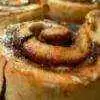-
Welcome to Celiac.com!
You have found your celiac tribe! Join us and ask questions in our forum, share your story, and connect with others.
-
Celiac.com Sponsor (A1):
Celiac.com Sponsor (A1-M):
-
Get Celiac.com Updates:Support Our Content
Asian Rice Pasta, Homemade
-
Get Celiac.com Updates:Support Celiac.com:
-
Celiac.com Sponsor (A17):
Celiac.com Sponsor (A17):
Celiac.com Sponsors (A17-M):
-
Recent Activity
-
- Scott Adams commented on Scott Adams's article in Additional Concerns2
Gluten Transfer from Biodegradable Tableware: What a New Study Found and Why It Matters (+Video)
Thanks for mentioning this, and here is an older article on the topic:- biodegradable
- celiac disease
- (and 8 more)
-
- Scott Adams commented on Scott Adams's article in Gluten-Free Grains and Flours18
Cricket Flour Makes Really Good Gluten-Free Bread
Your concern about certified gluten-free cricket powder is completely valid, as cross-contamination in both feedstock and processing is a real issue. Currently, the availability of certified gluten-free options is limited, but brands like Chapul and Entomo Farms, which I believe have offered products processed in dedicated facilities and labeled gluten-free... -
- DebJ14 commented on Scott Adams's article in Additional Concerns2
Gluten Transfer from Biodegradable Tableware: What a New Study Found and Why It Matters (+Video)
And let's not forget that we have to beware of paper straws. Those strips of paper are often glued into straws with wheat paste. I ran into this on a cruise when they stopped using plastic straws. I was sick within 30 minutes of having a Mojito. The person taking care of my food allergies pulled a box from a bar and sure enough "Contains Wheat" was written...- biodegradable
- celiac disease
- (and 8 more)
-
- RUKen replied to marion wheaton's topic in Gluten-Free Foods, Products, Shopping & Medications5
-
- lmemsm replied to Scott Adams's topic in Post Diagnosis, Recovery & Treatment of Celiac Disease43
Supplements for those Diagnosed with Celiac Disease
I've used magnesium taurinate and magnesium taurate vitamins. Didn't notice much of a difference when I used them.
-




Recommended Posts
Archived
This topic is now archived and is closed to further replies.